At the heart of every conference lies an opportunity to share knowledge and ideas and foster a sense of unity and connection among diverse individuals. When we step into these spaces to exchange insights and experiences, we have the opportunity to recognize the historical context in which these gatherings occur. One powerful way to achieve this is by beginning each conference presentation with a land acknowledgment—an act that brings to light the significance of the land on which we stand and the cultures that have shaped it.
As an educator who strives to be as inclusive as possible and is on a personal journey to develop a greater appreciation of other cultures, I have been interested in adding a land acknowledgment to the start of my conference presentations for quite some time. However, until recently, I delayed doing so for many reasons. Would I be able to craft an appropriate acknowledgment, and how would it be received?
One of the first times I heard a land acknowledgment was at the start of Nathan Horne’s PhysedCast podcast. Listen to the first 15 seconds of this episode to hear the powerful and respectful message of thanks to the original inhabitants (the Coast Salish people) of the land upon which Nathan was recording.
Later, I saw a Twitter post of Sarah Benes from her CTAHPERD keynote in which she gave a land acknowledgment, which gave me the confidence to reach out to her and reveal that I was ready to do the same but didn’t know where to start. What did I need to include, how should it be worded, what was the correct tone of voice to be used, would it come across as performative, and what would happen if I mispronounced the names of the Indigenous peoples?
The first resource I used came from Care About Climate, a digital progress and justice-driven climate education and empowerment organization. Their comprehensive “Five Steps to Writing A Land Acknowledgment“ blog post (written from a non-Indigenous perspective) is excellent and I learned that in order to do things correctly, I had to ensure my acknowledgment was genuine, honest, and empowering. The blog post not only provides a template to help craft a well-written acknowledgment, but it also includes links to further resources including land acknowledgments from Northwestern University and the US Department of Arts and Culture.
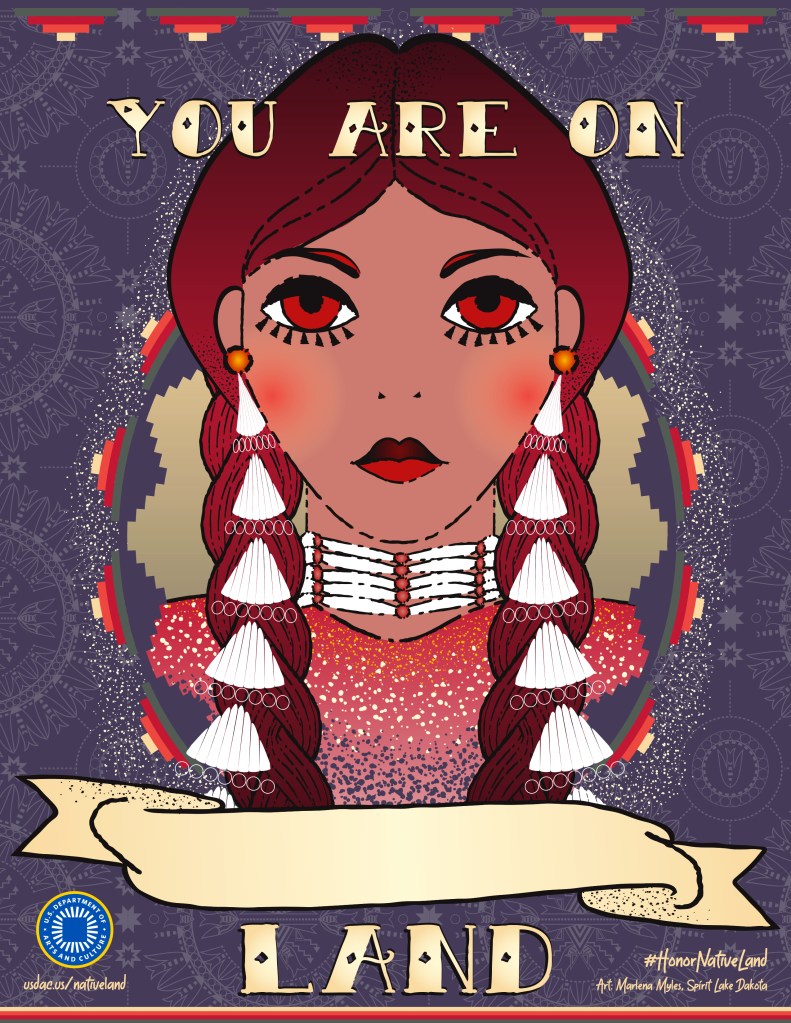

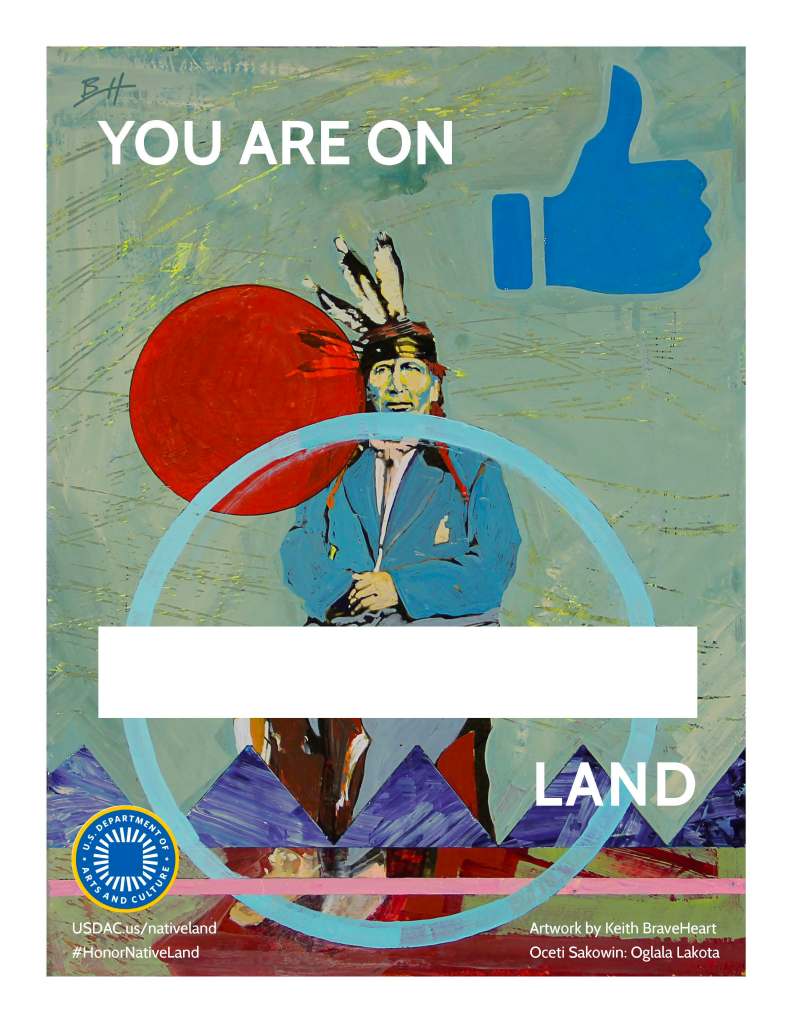

Check out this downloadable link for #HonorNativeLand color posters.
Diving deeper into my understanding of the role of land acknowledgments, I listened to this outstanding podcast episode from the American Association of Veterinary Medical Colleges. In the episode, Dr.’s. Evelyn Galban and Kevin Leonard discuss land acknowledgments, why they are so important, what elements they should include, and how to make them actionable. At almost 90 minutes long, it was an ideal length for my daily commute, and by the time I had arrived to school, my head was buzzing with ideas.
The National Museum of the American Indian advises that “when people ask for guidance in making land acknowledgments, we suggest reaching out directly to local Indigenous communities and to Native Nations forcibly removed from the area in the past to ask how they want to be recognized.”
In order to find out which particular communities were the original inhabitants of the land on which I was presenting, I visited this website developed by Native Land Digital. Native Land Digital strive to create and foster conversations about the history of colonialism, Indigenous ways of knowing, and settler-Indigenous relations through educational resources such as their map and Territory Acknowledgement Guide.
Typing ‘Seattle,’ the location of my impending conference, on the digital map, I learned that the Duwamish Tribe are the Indigenous people most closely associated with the area and are the host tribe of Seattle. The resources listed educated me on the tragic history of the Duwamish and their ongoing struggle for recognition. Their website informed me that the Duwamish Longhouse and Cultural Center was just a short distance from the conference center where I was presenting. I added visiting this site to my conference list of things to do while in Seattle.
My choice of location for my first land acknowledgment was perfect. Native Americans inhabited the Seattle area for at least 4,000 years before the first permanent European settlers colonizers and”Seattle” is named in honor of Native American Chief Si’ahl of the local Duwamish and Suquamish tribes. Seattle currently has high populations of Native Americans. They are still here.
Before crafting my first land acknowledgment and knowing that I wanted to read it aloud at the start of my conference presentation, I researched how to pronounce Chief Si’ahl correctly. This sound recording of the correct pronunciation of Chief Seattle’s name, provided by Skagit elder Vi Hilbert (1918-2008) helped a little (although I still wasn’t confident I had it right).
After a few weeks of research, I was ready to write something. I acknowledge that I borrowed elements from other land acknowledgments. Still, I am happy that I struck the right tone, acknowledging the past, present, and future and providing conference attendees with opportunities to learn more and support the local Indigenous residents.
I would like to acknowledge that the city of Seattle and its greenspaces are on stolen Coast Salish land, specifically the ancestral land of the Duwamish, Suquamish, Stillaguamish, and Muckleshoot People.
We are on the traditional land of the first people of Seattle, the Duwamish People whose ancestors have lived here and cared for these lands and waters throughout the ages and continue to do so. This city still carries the name of the Tribe’s most well-known leader, Chief Si’ahl (Seattle).
The stewardship of Seattle’s greenspaces by the Coast Salish people, despite the disruption of this work by colonization, continues today.
As guests and visitors, we can honor their ongoing contributions and the rich cultural heritage that they bring to this land by educating ourselves about the history and culture of the Coast Salish people. There are local museums and cultural centers to visit, and indigenous-owned businesses to support during our visit.
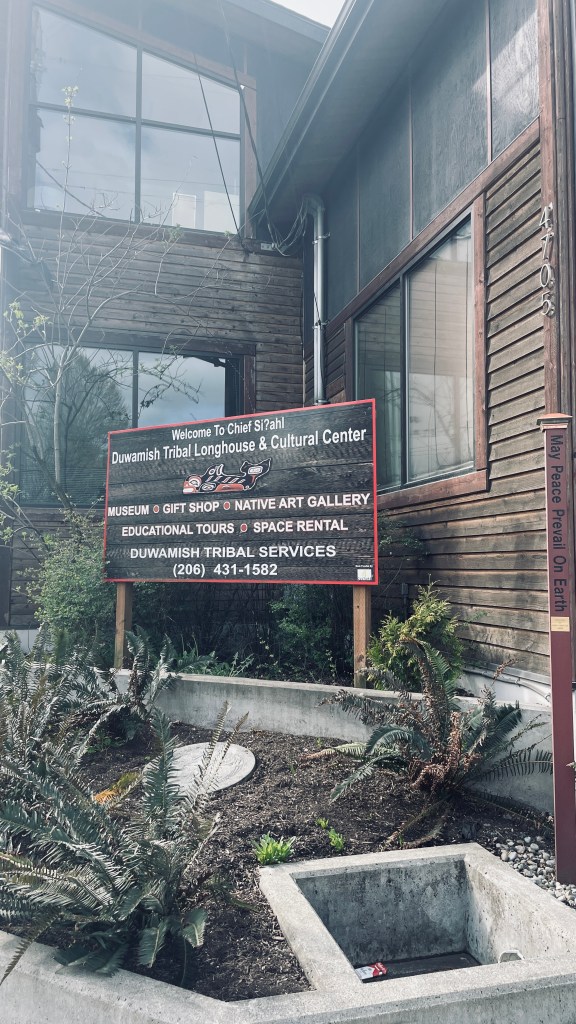
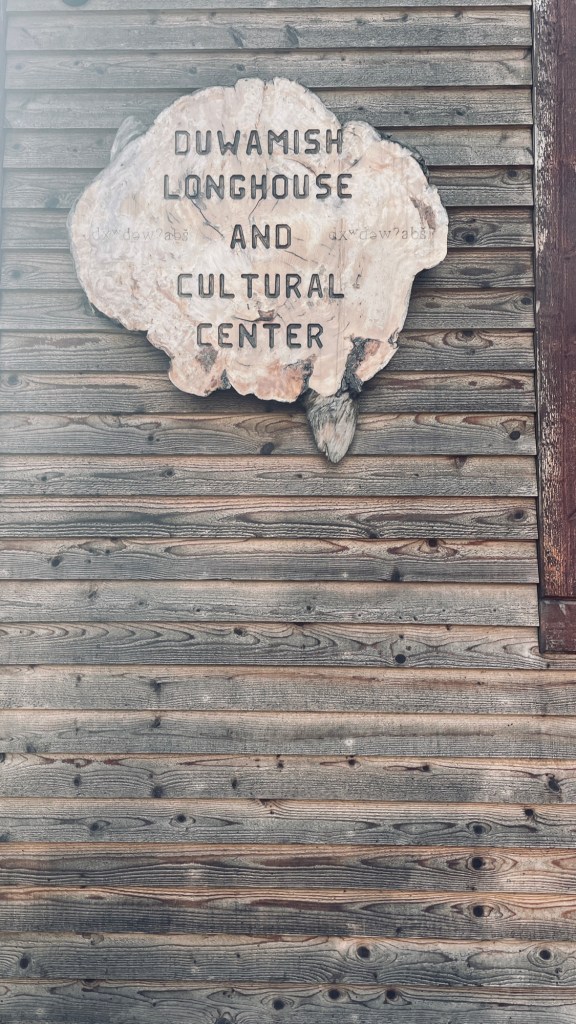

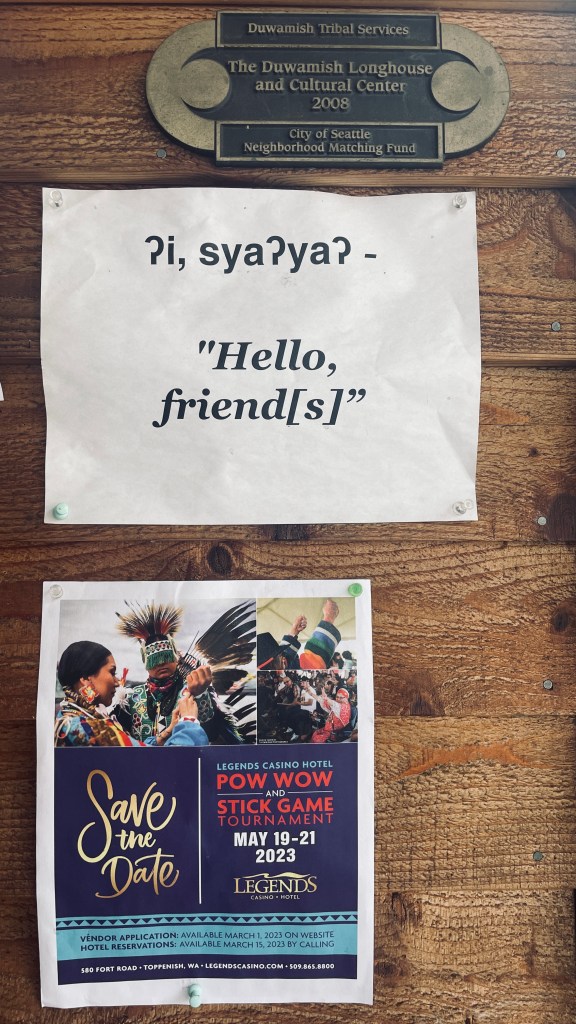
On the morning of my presentation, I visited the Duwamish Longhouse and Cultural Center to learn more about the Duwamish. I met with a curator at the museum to talk about her role and ask questions about the traditional recreation activities of the Tribe. I also asked for further guidance on the pronunciation of Chief Si’ahl!
Reading the acknowledgment (instead of simply letting attendees read it) was quite emotional. I teared up at the weight of my words, the recognition of the atrocities directed towards Indigenous peoples, and the relief of having gone through the process of research and writing something as significant for the first time. My efforts may not have been perfect, but I have grown as a result of understanding the importance and historical implications of giving land acknowledgments.
As educators, we hold the power to foster understanding and respect for the land we occupy and the indigenous communities who have been its stewards for generations. Creating a land acknowledgment might seem like a small step, but its impact can be profound. I encourage my fellow educators to embark on this journey with an open heart and a commitment to learning. Check out the valuable resources mentioned above, which aided me in my own process. By taking that first step, we can build bridges of acknowledgment and appreciation to enrich the educational experiences we offer, contributing to a more inclusive and compassionate society.
Pair this blog post with the following:
Starting a Purposeful Practice of EDI by Allisha Blanchette
Shape America EDI Podcast hosted by Sean Nevills
The Seven Circles: Indigenous Teachings for Living Well by Chelsey Luger & Thosh Collins (Non-Fiction)
Night of the Living Rez by Morgan Talty (Fiction)
